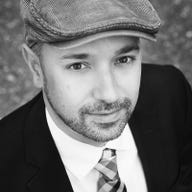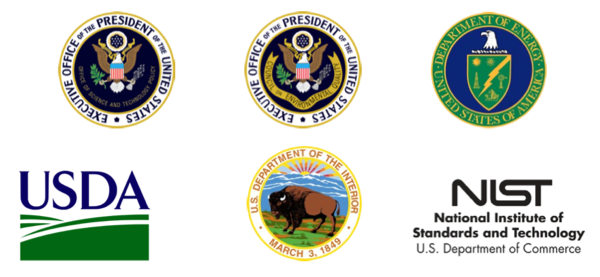IT and consumers play a big part in the new US power plan

If Thomas Edison could drop into 2011 and take a look at our progress, he would likely be dazzled by the smartphone, high definition video, and digital storage for music and movies -- all decedents of technologies that he pioneered and championed. However, something Edison would recognize all-too-well and would likely be puzzled at how little his creation had changed would be our electrical grid.
That's the narrative that White House officials used to help sell the idea of revolutionizing the U.S. electrical grid at an event for the press, energy industry leaders, and technology industry executives on Monday in Washington. Led by the Secretary of Energy Steven Chu and Federal CTO Aneesh Chopra, the White House unveiled its strategy for building a 21st century 'smart grid' as a catalyst to make power less expensive, minimize outages, unlock next generation power sources, and empower citizens to monitor and manage their own usage.

For technology professionals and the technology industry, if these plans become a reality then it will mean IT will play a vital role in conquering one of the most pressing challenges of the new century and it will open up new jobs and business opportunities for a wave of technologists and engineers.
As part of the event, the National Science and Technology Council released a new report called "A Policy Framework for the 21st Century Grid: Enabling Our Secure Energy Future." This report along with the rest of the White House's smart grid materials and its presentation on Monday are packed with details on the current challenges and obstacles and the ways the U.S. can overcome them. But, a lot of the information is locked away in bureaucratic and legal language, so here is my list of bullet points on what the Obama administration is trying to accomplish:
- A better grid - Upgrade the U.S. electrical infrastructure to drastically improve storage and transmission. Creating standards will be a critical part of the plan.
- Tap tech - Use IT to infuse a lot more intelligence and visibility into the power grid. This will enable utilities to better monitor and predict outages and recover more quickly. It will also drive better efficiency and planning overall.
- Citizen power - Enable consumers to have easy access to their own energy usage and better ways to control and self-regulate it in order to save money and energy. Smart meters are key.
- New energy - Prepare the 'smart grid' to better handle new forms of power -- wind, solar, geothermal, etc. -- that are going to be an increasingly larger proportion of the pie.
Likewise, here's my summary of the two big obstacles that the U.S. has to overcome:
- Innovator's dilemma - Since the U.S. is where the modern electrical grid was born, this country has an old, well-established infrastructure with a large installed base. Changing the stuff that is already in use and is critical to daily life is painful and expensive. It's like trying to repair an airplane while it's in the middle of a cross continental flight.
- Too many cooks in the kitchen - Lots of different states, municipalities, and companies have control and regulation over the way the electrical grid works across the U.S., and so there are a lot of different stakeholders who have a say in how things are done. As a result, any sweeping national changes are almost impossible to push. It takes a lot of buy-in and consensus-building.
The second issue deserves a little extra attention. Later in the day on Monday, President Obama, speaking at the President's Council on Jobs and Competitiveness in Durham, North Carolina, said that when he first came into office the smart grid issue was something he wanted to move quickly on. But, "I was rapidly informed that the problem wasn't capital... The problem was the patchwork of local jurisdictions," he said. He added that what's needed is to create a local, state, and federal agreement on energy and grid standards so that utilities "don't have to guess" when they are dealing with different jurisdictions to upgrade the grid.
This was confirmed by Bob Shapard, CEO of the Texas utility Oncor, who said that energy companies were ready to invest in upgrading the infrastructure. "This doesn't take government money," he said. "If we have the clarity, the utilities can raise all the capital."
So, that leaves the Obama administration to herd the cats. It has to get government agencies on the same page, convince private and public entities to agree on technological standards, get local and state governments to cede some of their jurisdiction to help create a national network, and convince citizens of the benefits of self-managing their own energy use.
It's no wonder that small countries like Ireland and totalitarian governments like China are moving a lot faster that the U.S. in modernizing their energy infrastructure.
Still, energy Secretary Steven Chu succinctly summed what's at stake. He said, "America cannot build a 21st century economy with a 20th century electricity system. By working with states, industry leaders, and the private sector, we can build a clean, smart, national electricity system that will create jobs, reduce energy use, and expand renewable energy production."
Also read
For more details on the U.S. smart grid plans, read:- Administration Announces Grid Modernization Initiatives to Foster a Clean Energy Economy and Spur Innovation
- Fact sheet: The President's Plan for a 21st Century Electric Grid
- A Policy Framework for the 21st Century Grid: Enabling Our Secure Energy Future
Footnote: No enthusiasm gap
Enthusiasm may be the best thing the U.S. has going for it in facing the two major obstacles to the smart grid. The participants in the event -- from officials in various agencies to business leaders in energy and technology to a couple high school students who've pioneered smart meters in their school -- all spoke with the enthusiasm you don't typically see at government events. They all seemed to have a sense that a big opportunity is standing right in front of us.And, a lot of people want to get in on this opportunity. One indicator of that was the huge line to get into the event itself (see photo below). Keep in mind that this wasn't a public event. Twenty minutes before the event was supposed to start, there was a line of over 100 people waiting to get through security at the White House's Eisenhower Building. Based on line chatter, these were mostly government officials and leaders from the energy industry.
Once I got in, the White House official who escorted me to the conference room asked, "Was there a line out there?" I explained that there were still about 100 people waiting to get in. He was shocked. "Whoa, really?" he asked. Once I made it into the South Court Auditorium -- which seats about 150 -- it was already over half full. The event was standing room only and I'm sure there were a lot of people who never made it in.

This was originally published on TechRepublic.